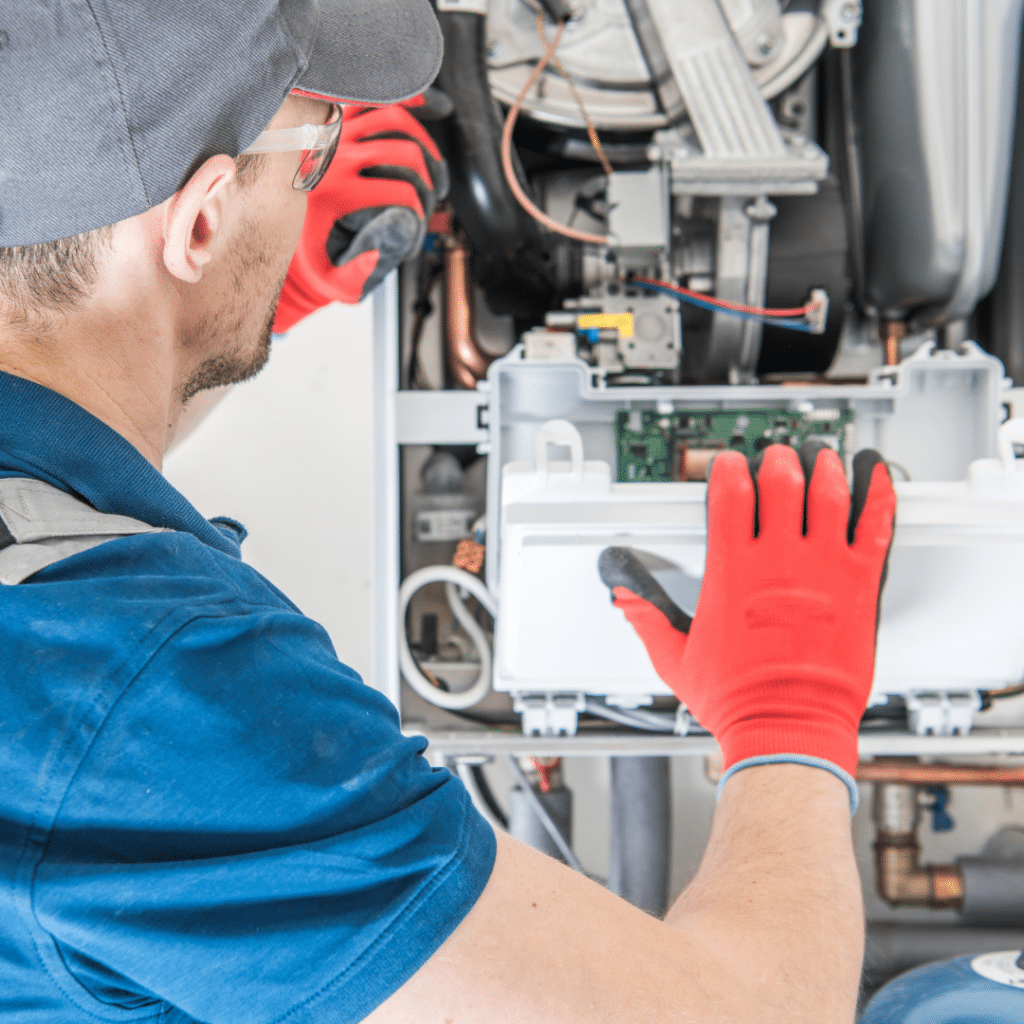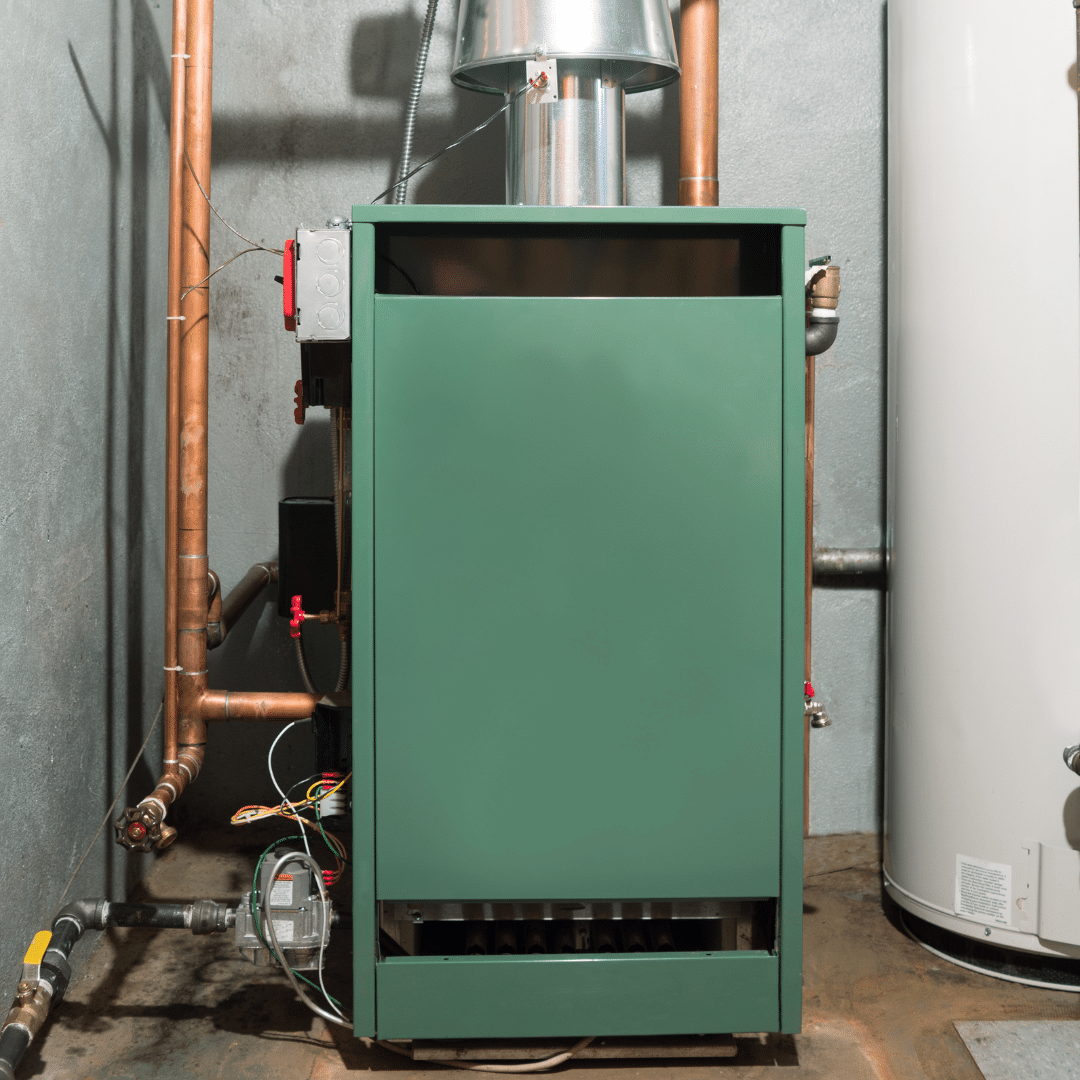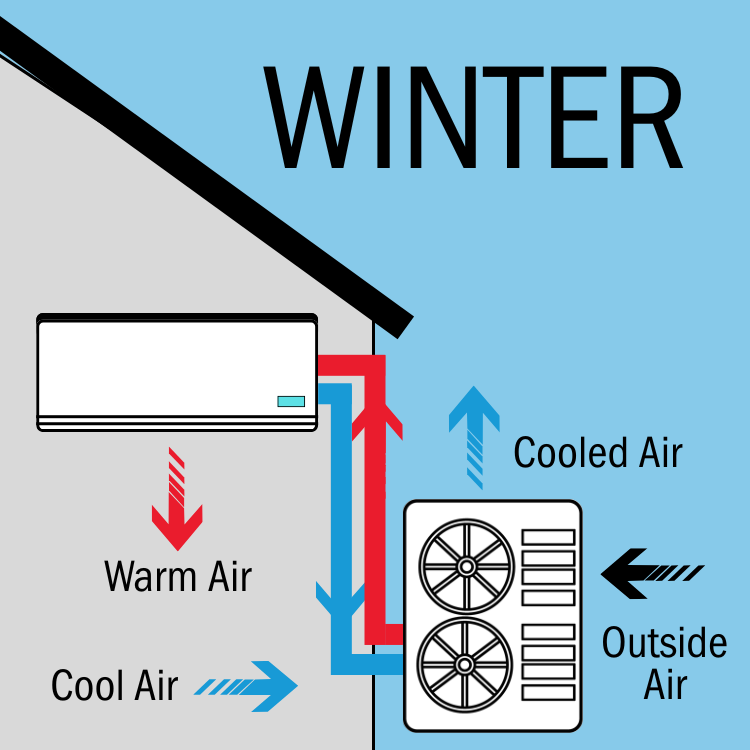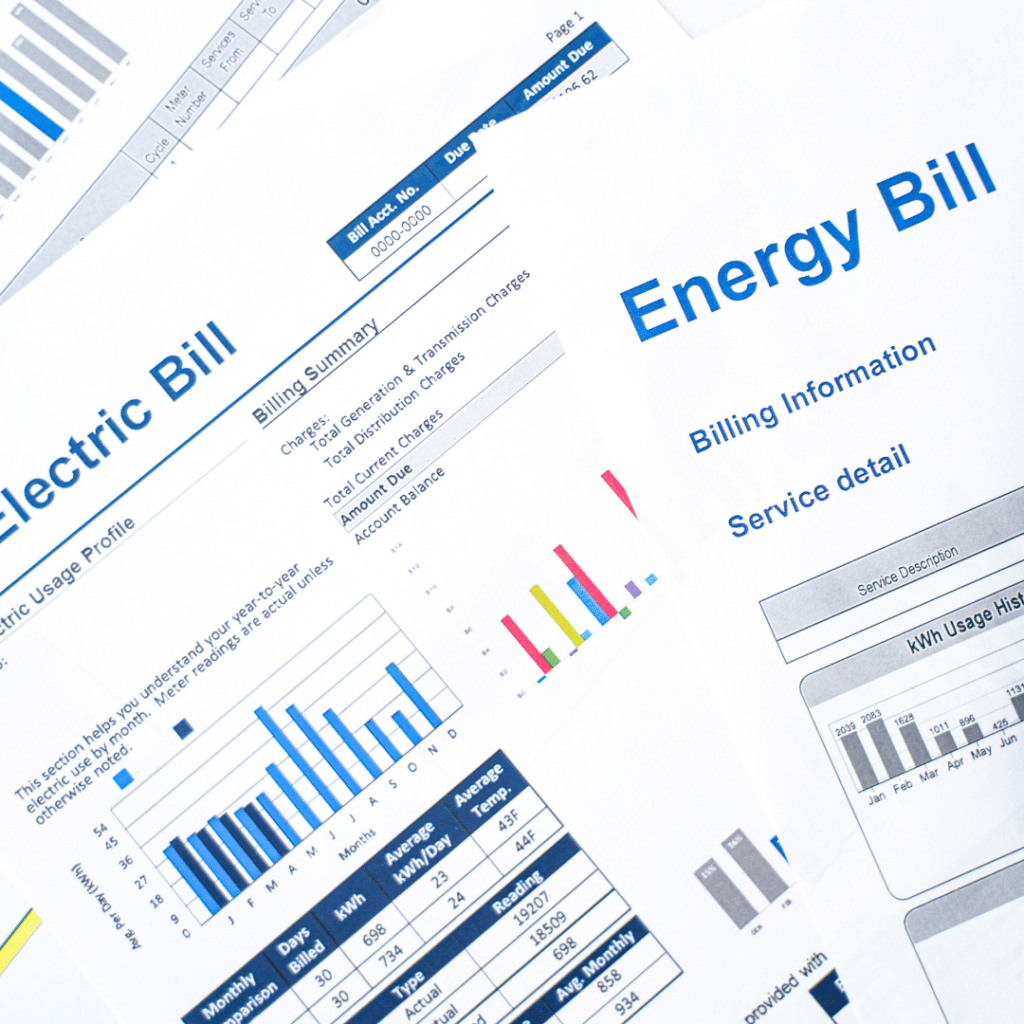Every dollar counts, especially when it comes to maximizing your energy efficiency and saving money on winter heating bills. Did you know that 54% of the average Coloradan’s energy bills go toward heating their home? Colder seasons in the Centennial State can be hard on the monthly budget! Unfortunately, there’s no way to avoid the harsh temperature drops if you want to live in this beautiful state year-round. Even cities further south, like Pueblo and Walsenburg, are not immune to negative temps and long cold snaps.
In short, you need a heat source if you want a safe, warm home to wait out a Colorado winter. Heat doesn’t just protect your family. It also protects your pets, pipes, wiring, appliances — and even furniture! Unfortunately, the cost of energy tends to spike right when you need to use your heater the most. Utility prices are already high these days and residents in cities like Pueblo and Colorado Springs experience rate hikes in their gas and energy bills every year.
If you’re worried about the impact of rising energy costs on your monthly budget this season, we are here to help! We’ve compiled a list of a variety of ways to help you keep your home warm while improving your energy efficiency and saving money on your utility bills. Let’s get started.
Start with a Heat/Furnace Inspection
Start with an inspection of your primary heat source. Do you have a furnace? A boiler? Electric baseboard heaters? Most homes in Colorado rely on an electric or gas furnace or a combination unit. However, other systems, like boilers and mini splits, have become more popular. Since furnaces are the most common heat source in the state, we’ll focus on those.
A furnace inspection gives you a total picture of the overall health of your HVAC system. You’ll get a lot of tips for insulating your windows and upgrading your thermostat further down, but none of them will be as effective if your furnace isn’t up for the job of heating your home. Think of it this way: If you insulate every window in your home, it won’t help it stay warm if your furnace can’t put out enough heat. That’s why you start with the furnace first. The list on the right shows an example of items a Flow Right technician might check out during your inspection.
- Full Furnace Inspection
- Age of furnace
- Connections
- Heat exchanger
- Furnace filter
- Fan
- Motor
- Fuel lines
- Clean chimney, vents, burners
- Electrical connections

In addition to checking the overall health, your HVAC technician can also help you explore some additional ways to save on energy bills:
- Is this furnace the right size for your home? Have you added square footage or changed the configuration of the space? Was the furnace ever the right size or was it too small from day one?
- Is your furnace as energy efficient as possible? Is it older or outdated, despite still operating? Does it use a fuel that is difficult to find or rely on other resources/parts that are difficult to replace?
- How many years does the furnace have left? Is it better to upgrade sooner than later?
- What tune-ups/adaptations can improve energy efficiency? Could you keep your heater and upgrade individual rooms with a mini split? Do you need better ducts or vent placement?
Once you’ve assessed your furnace, it’s time to assess your home’s overall winterization preparedness. If your furnace is producing heat properly, is the home retaining it? Here are some easy ways to help boost your heat retention.
Improve Your Thermal Envelope: Easy Ways to Winterize Your Home
Help your home hold onto that precious heat your furnace is pumping out with a few simple winterization steps! By reinforcing your home’s “thermal envelope,” you can stop wasting heat and letting money slip right out of your doors and windows during the winter months.
Try These Steps to Seal the Envelope and Help Save on Energy Bills
- Insulate windows and doors. Seal up cracks and gaps with caulking and ensure weatherstriping is snug around sashes. Use spray foam where applicable. Repair any wood rot or damaged trim on the home’s exterior. Check door jambs for gaps and make sure all areas are sealed off to stop drafts and moisture.
- Boost insulation with door sweepers, insulation film and curtains. In addition to fixing the exterior, create additional cold barriers with removable insulation boosters. Insulation film covers your windows without interfering with the natural light. Door sweepers keep drafts from blowing cold air across the floors day and night. Heavy curtains can help maximize your windows’ insulation, too. Curtains can also be used to isolate high-traffic areas like mudrooms and entryways, so the cold stays out and the heat stays in.
- Consider updating your attic insulation. Make sure all entrances to the attic are insulated, as well as any venting and wiring gaps or cold spots like chimneys and fireplace venting. Once you’ve closed the gaps, you can shift to updating or adding to your attic insulation. Check out this website for details on the proper insulation for Colorado. While you’re in the attic, do a visual inspection for roof leaks and pests, too.
- Inspect the foundation and basement or crawl spaces. Does your foundation have gaps or cracks that create vectors for cold air to enter the home? Do you have doors, hatches or other entrances that allow cold air in? Solve those problems just like the windows and doors — caulking, weather stripping, door sweepers and, if necessary, insulating curtains.
- Protect your plumbing. Help your heater by insulating your plumbing. Contact Flow Right if you’d like to learn about options like heat tape for preventing freezes. We can also help you winterize your sprinklers and protect exterior faucets.
An important note about insulation: While you want to seal up leaks and drafts, you do not want to eliminate your home’s ventilation system. Do not block vents designed to promote necessary air circulation. This can cause moisture build-up and poor air quality. Additionally, make sure all CO detectors are working properly and test them monthly.
Invest in a Programmable Thermostat
One of the simplest steps you can take to save on your energy bills and improve energy efficiency is to purchase a programmable thermostat. According to the Environmental Protection Agency, people who install an Energy Star-certified thermostat can save an average of 8% on their energy bills each month!
With a programmable thermostat, you can take control of your heating 24/7/365. You don’t have to worry about overheating an empty house all day long, nor will you have to worry about coming home to a cooler space after braving the cold. You can program your thermostat to turn down while you’re gone (not all the way off, you need to protect your space/pipes/pets) and turn up while you’re home. Turn it down while you’re sleeping and turn it up when you’re awake.
You can even create cycles that warm up and cool down at different times of day. You can set temporary cycles that boost the heat if everyone is complaining, but turns down after a time so you don’t just run the furnace nonstop because everyone was briefly cold.

If you can budget for it, invest in a smart thermostat that you can access from your phone or computer. It can be a huge help when you are away from home and need to adjust the temperature of your home. It can also report when your furnace isn’t working or your thermostat needs new batteries.
If you need more than a few curtains and a new thermostat to meet your energy efficiency goals, there are other upgrades you can make that are a bit more costly, but absolutely worth your investment. Let’s explore some bigger winterization upgrades for the home.
Consider Bigger Winterization Upgrades
Sometimes you need to spend money to save money. These energy savers require an initial investment that will save you money over time. They can also make a big difference in the overall comfort of your home.
Upgrade Your Furnace.
Did your furnace inspection yield less than stellar results? It may be time to consider upgrading your system. Remember, just because it runs, doesn’t mean it’s running well.
A new furnace will operate under the most current regulations, which emphasize cost savings and efficiency for customers. Not only that, a new furnace comes with a manufacturer warranty, which means you’ll have peace of mind that you won’t be spending a huge amount on a replacement.


Some factors to consider:
- Are you paying for a heater that never gets your home warm enough?
- Does it need frequent maintenance or emergency service calls?
- Is it expensive to operate?
- Is it old or outdated?
- Does it use hard-to-find fuel?
- Is it safe?
Add a Ductless Heat Pump Mini Split.
Do you have a room that never seems to warm up? Do you need to improve your duct work but don’t have the budget or don’t want to tear apart your home for a renovation? Mini splits can boost energy efficiency by targeting cold areas directly and many versions offer both heating and cooling. We have a helpful article about mini splits here.

Upgrade Your Insulation.
If you live in an older home, your wall insulation may have degraded over time. If you can’t ever seem to warm up your space, notice “cold spots” along the interior of exterior-facing walls or experience steep drops in temperature when the heat turns off, it’s probably a good idea to see how your wall insulation is holding up. You can rent a thermal camera from the hardware store to get a better understanding about how your insulation is performing along exterior walls. Options for replacing insulation include drill-and-fill blown in insulation or interior/exterior replacement during drywall/siding removal.
Consider Hydronic Heating.
You don’t need to retrofit your entire home with a new boiler system in order to enjoy the benefits of hydronic heating. Adding features like heated floors in the bathrooms or bedrooms can make a massive difference in keeping your home warmer and more energy efficient. Hydronic heating uses hot water run through pipes to warm a space with radiant heat. It has a lot of benefits, like increasing the moisture content in the air, cozy floors and quiet (silent) operation.
If you’re in the planning phase of building a future home, you may want to consider the benefits of hydronic heating, whether it’s for the whole home or just a few rooms.

It will definitely support your energy efficiency goals!
Research Incentives and Rebates
You can save money on some of your investments and upgrades by exploring your options for rebates and credits. City, state and federal governments, as well as HVAC manufacturers themselves, have many options for residents who invest in home energy efficiency.
Flow Right has created a very helpful Colorado Homeowner Savings Guide with all sorts of tips for finding ways to make your energy upgrades pay you back! It’s absolutely worth a read and it could save you hundreds of dollars on annual energy bills or even thousands of dollars on a new furnace or other HVAC improvement.
Do your research and look for:
Use These Tips and Save!
Whether you make a few small changes to your home or invest in a complete energy overhaul, you can count on Flow Right to help! Give us a call if you would like to book a furnace inspection, learn more about hydronic heating or upgrade your HVAC! We offer complimentary estimates so you can get a risk-free assessment of your options!

